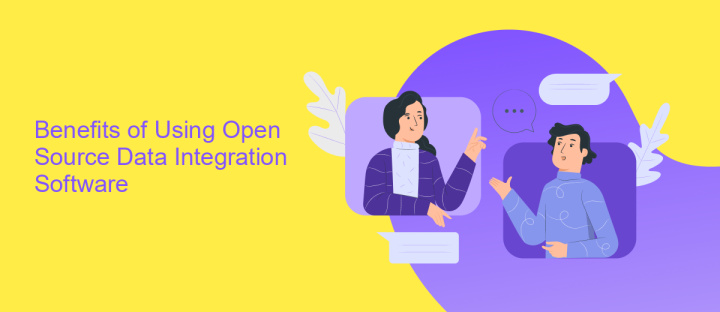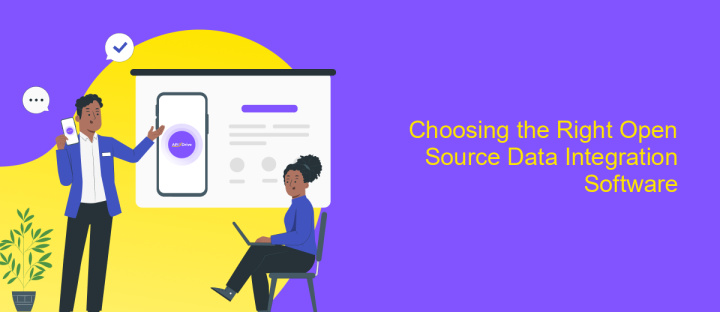Open Source Data Integration Software
Open source data integration software has revolutionized the way businesses manage and analyze their data. By leveraging community-driven development and collaboration, these tools offer robust, customizable solutions without the high costs associated with proprietary software. This article explores the benefits, key features, and top options available in the open source data integration landscape, helping organizations make informed decisions to streamline their data workflows.
Introduction: What is Open Source Data Integration Software?
Open Source Data Integration Software refers to tools and platforms that facilitate the process of combining data from different sources into a single, unified view. These solutions are freely available for use, modification, and distribution, making them a cost-effective choice for organizations looking to streamline their data management processes. By leveraging open source data integration tools, businesses can ensure better data accuracy, consistency, and accessibility.
- Flexibility: Customize the software to meet specific needs.
- Cost Efficiency: No licensing fees or subscription costs.
- Community Support: Benefit from a community of developers and users.
- Transparency: Access to source code for better security and reliability.
- Interoperability: Seamless integration with various data sources and systems.
Utilizing open source data integration software can significantly enhance an organization's ability to manage and analyze data. These tools not only reduce costs but also provide the flexibility and support needed to adapt to evolving data landscapes. As a result, businesses can make more informed decisions and maintain a competitive edge in their respective industries.
Benefits of Using Open Source Data Integration Software

Open source data integration software offers numerous benefits, including cost-effectiveness and flexibility. Unlike proprietary solutions, open source tools do not require expensive licensing fees, making them accessible for organizations of all sizes. Additionally, these tools are highly customizable, allowing businesses to tailor the software to meet their specific needs. This adaptability ensures that the integration process can evolve in tandem with the organization's growth and changing requirements.
Another significant advantage is the community support and continuous improvement that open source software provides. With a large and active community of developers and users, issues are quickly identified and resolved, and new features are regularly added. Services like ApiX-Drive can further enhance the integration experience by offering user-friendly interfaces and automated workflows, simplifying the process of connecting various data sources. This combination of community-driven innovation and specialized services ensures that open source data integration software remains a robust and reliable choice for businesses.
Popular Open Source Data Integration Software Tools

Open source data integration software tools have become increasingly popular due to their flexibility, cost-effectiveness, and community support. These tools allow organizations to seamlessly integrate, transform, and manage data from various sources, enabling better decision-making and operational efficiency. Below are some of the most popular open source data integration software tools:
- Apache NiFi: A robust data integration tool designed for data flow automation and real-time analytics.
- Talend Open Studio: An extensive suite for data integration, big data, and application integration with an intuitive graphical interface.
- Pentaho Data Integration (Kettle): Known for its ease of use and powerful ETL capabilities, making it suitable for both small and large-scale data projects.
- Apache Camel: A versatile integration framework that provides a standardized approach to integrating various systems using enterprise integration patterns.
- Airbyte: A newer entrant in the space, focusing on ease of use and extensibility with a wide range of connectors.
These tools offer a range of features and capabilities to meet different organizational needs, from simple data migrations to complex, real-time data processing workflows. By leveraging open source solutions, organizations can reduce costs while maintaining high levels of flexibility and scalability.
Choosing the Right Open Source Data Integration Software

Choosing the right open source data integration software can be a complex task, given the variety of options available. The key is to identify your specific needs and match them with the features offered by different tools. Consider factors such as data sources, scalability, and ease of use.
Before making a decision, it's crucial to evaluate the community support and documentation available for each tool. Open source projects thrive on active communities, so ensure there is a robust support system in place. Additionally, consider the frequency of updates and the responsiveness of the development team.
- Compatibility with existing systems
- Data transformation capabilities
- Real-time data processing
- Security features
- Cost of ownership
After narrowing down your choices, conduct a trial run with a few shortlisted tools. This will help you understand their practical applications and identify any potential issues. Ultimately, the right software should not only meet your current requirements but also be flexible enough to adapt to future needs.
Best Practices for Implementing Open Source Data Integration Software
When implementing open source data integration software, it is crucial to start with a clear understanding of your data requirements and objectives. Assess the types of data sources, formats, and volumes you will be dealing with. This will help you choose the most suitable tools and frameworks, ensuring they align with your existing infrastructure. Additionally, prioritize scalability and flexibility to accommodate future growth and changes in data needs.
To streamline the integration process, consider leveraging services like ApiX-Drive, which provides user-friendly interfaces and automation features. These services can simplify the setup and management of data integrations, reducing manual efforts and minimizing errors. Regularly monitor and test your integrations to ensure data accuracy and consistency. Implement robust security measures to protect sensitive information and comply with relevant regulations. By following these best practices, you can effectively harness the power of open source data integration software to drive business insights and operational efficiency.
FAQ
What is Open Source Data Integration Software?
What are the benefits of using Open Source Data Integration Software?
How do I choose the right Open Source Data Integration Software for my needs?
Is there any service that can help with the automation and configuration of data integrations?
Can Open Source Data Integration Software handle real-time data integration?
Routine tasks take a lot of time from employees? Do they burn out, do not have enough working day for the main duties and important things? Do you understand that the only way out of this situation in modern realities is automation? Try Apix-Drive for free and make sure that the online connector in 5 minutes of setting up integration will remove a significant part of the routine from your life and free up time for you and your employees.

